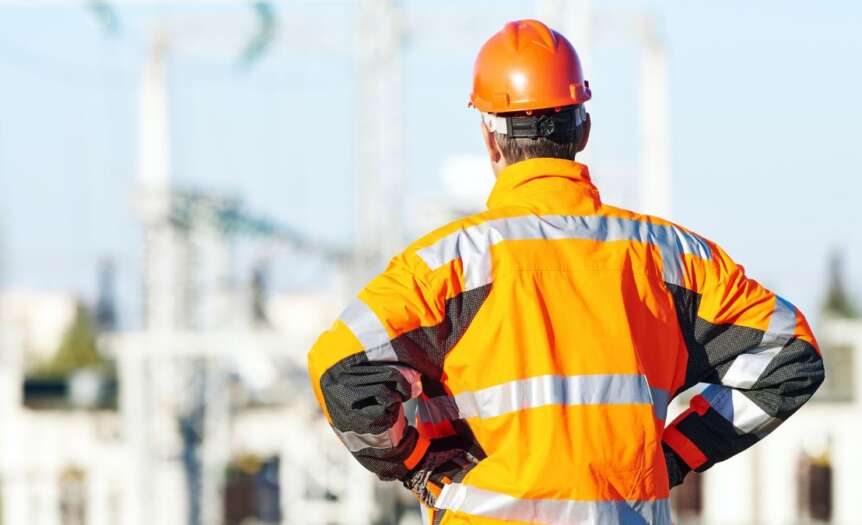Did you know that not all personal protective gear is the same? Here are the different classes and types of high-visibility clothing.
Types
The American National Standards Institute, also known as the ANSI, determines the three types of high-visibility clothing. The “type” refers to the setting in which a construction/industrial worker operates, such as roads or public areas. The three types of gear are Type O, Type R, and Type P.
Type O: This type is required for anyone working off-road. The common industries that use Type O gear are gas and oil, industrial work conducted in warehouses and factories, and outdoor maintenance such as parking lot repair and cart collection.
Type R: Standing for “roadway,” any individual who works on or near public roadways must wear Type R PPE, especially roadside construction employees. Type R garments provide superior visibility at night and during the day. Other professionals who use Type R gear are crossing guards, towing operators, toll booth and parking attendants, and airport ground crew.
Type P: All public safety individuals are required to wear Type P items while on the job. This includes firefighters, certain law enforcement officers, first responders, and emergency medical responders.
Classes
Like the three types of high-visibility clothing, ANSI determines different performance classes. Performance ratings relate to how visible gear is as specific industries require brighter and more reflective PPE. The four classes are Performance Class 1-3 and Supplemental Class E.
Performance Class 1: The lowest performing level for hi-vis gear, meaning they help distinguish an individual from their environment but aren’t exceptionally bright. Off-road workers typically wear Performance Class 1 items.
Performance Class 2: Roadway construction workers require Performance Class 2 and, sometimes, Performance Class 3 garments. Performance Class 2 items contain more hi-vis material than Performance Class 1, making individuals more visible to cars and pedestrians.
Performance Class 3: In certain complicated environments and low-visibility conditions, roadway workers require Performance Class 3 gear. These garments contain additional reflective and fluorescent elements, such as hi-vis shapes or stripes on sleeves and pants.
Supplemental Class E: This class refers to additional hi-vis items to complement Performance Classes 1-3. On its own, Supplemental Class E doesn’t satisfy any ANSI regulations. Instead, these items increase an individual’s visibility even further when used in conjunction with the other performance classes.
The Importance of PPE
So why must we determine different classifications of high-visibility garments? Because all forms of personal protective equipment are essential when working in high-risk, industrial settings.
These simple items help save thousands of individuals annually from injuries and death. If you are a manager/leader in one of these industries, it’s essential that you promote PPE worker compliance while on the job. Plus, there are legal ramifications for not following the ANSI rules.
Now that you know the different classes and types of high-visibility clothing, you can better protect yourself, other workers, and the public. Double-check that your PPE meets the requirements of the ANSI before starting work.










 Deering Estate
Deering Estate
 Massage Envy South Miami
Massage Envy South Miami
 Calla Blow Dry
Calla Blow Dry
 My Derma Clinic
My Derma Clinic
 Sushi Maki
Sushi Maki
 Sports Grill
Sports Grill
 The Healthy Kitchen
The Healthy Kitchen
 Golden Rule Seafood
Golden Rule Seafood
 Malanga Cuban Café
Malanga Cuban Café

 Kathleen Ballard
Kathleen Ballard
 Panter, Panter & Sampedro
Panter, Panter & Sampedro
 Vintage Liquors
Vintage Liquors
 The Dog from Ipanema
The Dog from Ipanema
 Rubinstein Family Chiropractic
Rubinstein Family Chiropractic
 Your Pet’s Best
Your Pet’s Best
 Indigo Republic
Indigo Republic




 ATR Luxury Homes
ATR Luxury Homes


 2112 Design Studio
2112 Design Studio
 Hamilton Fox & Company
Hamilton Fox & Company
 Creative Design Services
Creative Design Services
 Best Pest Professionals
Best Pest Professionals
 HD Tree Services
HD Tree Services
 Trinity Air Conditioning Company
Trinity Air Conditioning Company
 Cisca Construction & Development
Cisca Construction & Development
 Mosquito Joe
Mosquito Joe
 Cutler Bay Solar Solutions
Cutler Bay Solar Solutions


 Miami Royal Ballet & Dance
Miami Royal Ballet & Dance
 Christopher Columbus
Christopher Columbus
 Pineview Preschools
Pineview Preschools
 Westminster
Westminster
 Carrollton
Carrollton
 Lil’ Jungle
Lil’ Jungle
 Frost Science Museum
Frost Science Museum
 Palmer Trinity School
Palmer Trinity School
 South Florida Music
South Florida Music
 Pinecrest Orthodontics
Pinecrest Orthodontics
 Dr. Bob Pediatric Dentist
Dr. Bob Pediatric Dentist
 d.pediatrics
d.pediatrics
 South Miami Women’s Health
South Miami Women’s Health

 The Spot Barbershop
The Spot Barbershop
 My Derma Clinic
My Derma Clinic




 Miami Dance Project
Miami Dance Project

 Rubinstein Family Chiropractic
Rubinstein Family Chiropractic
 Indigo Republic
Indigo Republic

 Safes Universe
Safes Universe
 Vintage Liquors
Vintage Liquors
 Evenings Delight
Evenings Delight





 Atchana’s Homegrown Thai
Atchana’s Homegrown Thai
 Baptist Health South Florida
Baptist Health South Florida

 Laser Eye Center of Miami
Laser Eye Center of Miami
 Visiting Angels
Visiting Angels
 OpusCare of South Florida
OpusCare of South Florida

 Your Pet’s Best
Your Pet’s Best





 HD Tree Services
HD Tree Services
 Hamilton Fox & Company
Hamilton Fox & Company


 Creative Design Services
Creative Design Services